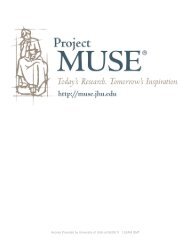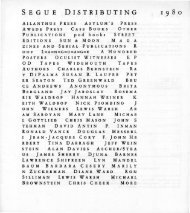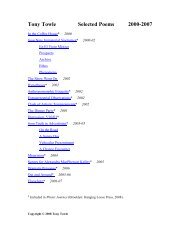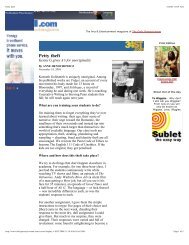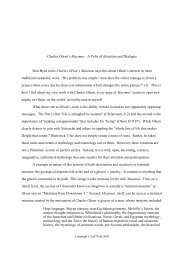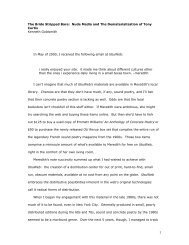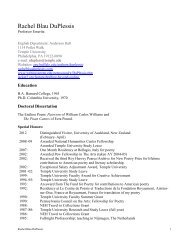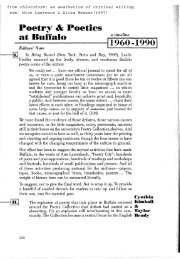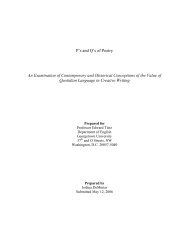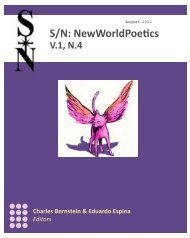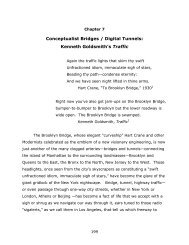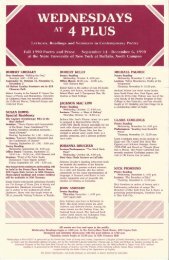Preface - Electronic Poetry Center
Preface - Electronic Poetry Center
Preface - Electronic Poetry Center
Create successful ePaper yourself
Turn your PDF publications into a flip-book with our unique Google optimized e-Paper software.
Apropos Claim 1: I see plenty of evidence in both volumes of the New Coast to<br />
suggest that G2 meets the minimal definition of "social motivation" provided<br />
by Ron ("general dissatisfaction w/the present condition of things"). If<br />
anything, the failure of the New Left and the impasses of identity politics seem<br />
to have increased that dissatisfaction, while the fact that G1’s claims for the<br />
social efficacy of its collective poetic project have only been partially borne out<br />
suggests the necessity of exploring alternate routes.<br />
Apropos Claim 2: The ominous scenario in which the social is somehow<br />
"drained" away only makes sense if such devices as one finds in ITAT<br />
represent the exclusive means of criticizing existing social relations and<br />
evoking potentials for social transformation. Ron establishes a double bind for<br />
G2: continue to employ G1’s devices (in which case you’ll be labeled<br />
derivative and your motivation will be characterized as improper) or<br />
invent/adopt other devices (in which case you’ll be accused of permitting the<br />
"social" to "drain" away). I’ve been seeing variants of this argument since the<br />
mid-80s, and I’d have thought it was clear by now that there is more than one<br />
way to compose/propose the social in poetry, and that the employment of<br />
devices associated with the lyric genre does not automatically entail the<br />
abandonment of an oppositional literary and social project.<br />
Apropos Claim 3: Does it make sense to compare the New Coast, an<br />
emphatically "prospective" collection of 119 young writers, to such<br />
retrospective anthologies as the New American <strong>Poetry</strong> and ITAT? (I leave<br />
aside The Art of Practice, though the fact that 10 of the 45 writers presented<br />
there also appear in the NC makes the attempt to set them sharply at odds<br />
untenable). I think the question of what devices these young writers will<br />
develop in their careers is anything but settled at this point. The suggestion that<br />
G2 has "returned" to the lyric implies that the question has already been settled<br />
in favor of a modest conservatism: in which case it remains to be explained<br />
why no three poets in the New Coast could be inserted into the NAP or ITAT<br />
without substantially changing the texture of either preceding collection.<br />
I think the summary judgment that G2 brings forward "no new devices" is a<br />
conveniently veiled way of discrediting work that mobilizes a host of "devices"<br />
and puts into play a range of "motivations" that haven’t yet been codified (and,<br />
in response to the perceived "programmaticism" of G1, may not elect to use the<br />
strategies of codification favored by that previous generation).<br />
There are other questions that could be posed here (why for instance the Apex<br />
of the M has been taken as the chief development requiring explanation in the



